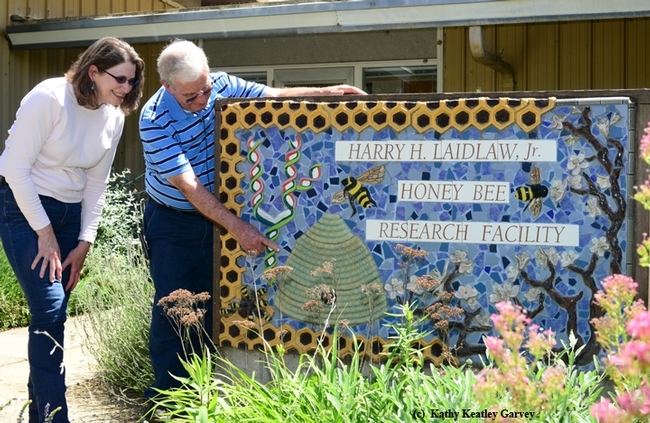It's out. 
This is the bible of the beekeeping world, and rightfully so. It was first published in 1853--which, by the way, happens to be the same year that the European honey bee arrived in California.
Apiarist, minister, and teacher L. L. Langstroth (1810-1895), “The Father of American Beekeeping,” wrote the first edition, then called Langstroth on the Hive and the Honey Bee.
The Hive and the Honey Bee, last updated in 1992, is a massive effort. Published by Dadant, the 1057-page book is the work of dozens of national and international icons in beekeeping science and the beekeeping industry. The book traces the global history of beekeeping to modern day apiculture and spotlights the progress, problems and achievements along the way. European colonists brought the honey bee to America (Jamestown colony) in 1622.

Gary wrote a chapter on “Activities and Behavior of Honey Bees"; Mussen, “Injury to Honey Bees by Poisoning"; and Cobey, “Instrumental Insemination of Honey Bee Queens.”
“It has taken us until the 21st Century to realize just how important these hardworking insects are and their significance in the integrity of the environment is, at least, beginning to be fully understood,” wrote Richard Jones, director emeritus of the International Bee Research Association, Cardiff, United Kingdom, in the first chapter. “There are many threats to honey bees and the possibility of their demise has sharpened interest in them and in turn led to further investigating, scientific research and the dissemination of more material on their management and well-being.”
Gary opened his chapter with “The activities and behaviors of honey bees haven't changed significantly in thousands of years! What has changed is our understanding of how and why bees behave as they do.”

Mussen began his chapter with “Honey bees have been exposed to naturally occurring intoxicants and poisons for tens of millions of years. Their exposure was limited mostly to toxicants that were components of nectar and pollen or naturally occurring gases such as methane from anaerobic breakdown of organic wastes.”
“While flying as many as four miles from the hive in their quest for water, nectars, pollens and propolis, a fifty-square mile potential area of coverage, forages are likely to encounter many different chemicals and organisms,” Mussen wrote.

In her chapter on instrumental insemination, Cobey wrote: “The ability to control honey bee mating is essential for stock improvement and a valuable research tool. Instrumental insemination provides complete control of the random honey be mating behavior.”
Cobey noted that queens “mate in flight with an average of 10 to 20 drones in congregating areas consisting of 10,000 to 30,000 drones from diverse genetic sources.”
Former manager of the Harry H.Laidlaw Jr. Honey Bee Research Facility, Cobey served UC Davis from 2007 to 2012 when she joined the WSU Department of Entomology. With a strong background in practical bee breeding for the commercial industry, she developed a collaborative honey bee stock improvement and maintenance program, partnering with the California queen producers. She coordinated a project to develop techniques for the international transport of honey beegermplasm. Under a permit from the USDA's Animal and Plant Health Inspection Service (APHIS), germplasm collected from Old World European honey bees was successfully imported and incorporated into domestic breeding stocks to enhance U.S. honey bees. Cobey developed information and outreach programs to assist beekeepers in honey bee breeding methods, providing instructional material and workshops in queen rearing and instrumental insemination, presented locally and internationally.
Norm Gary, Eric Mussen, Susan Cobey--three UC Davis scientists who made a difference in the beekeeping world and are sharing their expertise.
The "bee bible" belongs on the bookshelf of every bee scientist, beekeeper, and bee enthusiast.
(Editor's Note: The price for the new edition is $54.50 plus shipping, and the books can be ordered now from the Dadant web site: www.dadant.com or purchased at any of the Dadant branches. The toll-free order line for the Hamilton, Ill., home office is 1-888-922-1293.)
Attached Images:

Norm Gary, UC Davis emeritus professor of entomology, with Barbara Allen-Diaz, then vice president of the UC Agriculture and Natural Resources. (Photo by Kathy Keatley Garvey)

Extension apiculturist Eric Mussen, now retired, shows a bee hive to visitors. (Photo by Kathy Keatley Garvey)

Bee breeder-geneticist Susan Cobey with a frame. (Photo by Kathy Keatley Garvey)